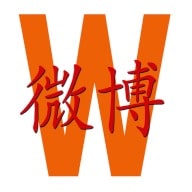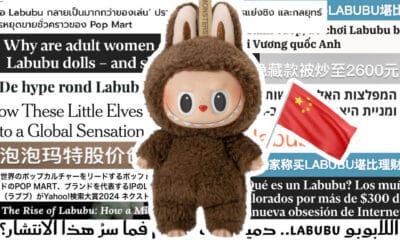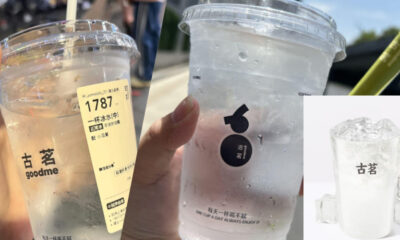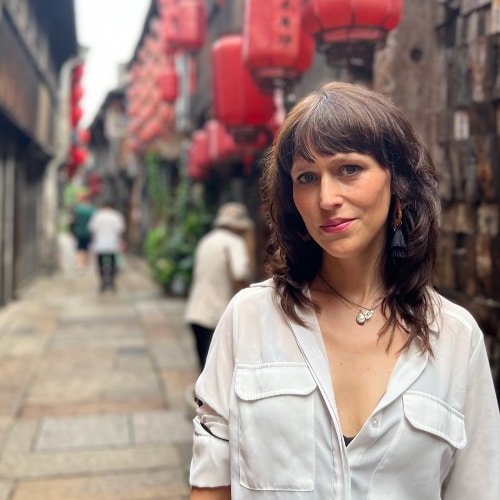China Brands, Marketing & Consumers
Chinese Fashion First: Consumer Nationalism and ‘China Chic’
Consumer sentiments on Western brands and made-in-China fashion are changing.
Published
4 years agoon
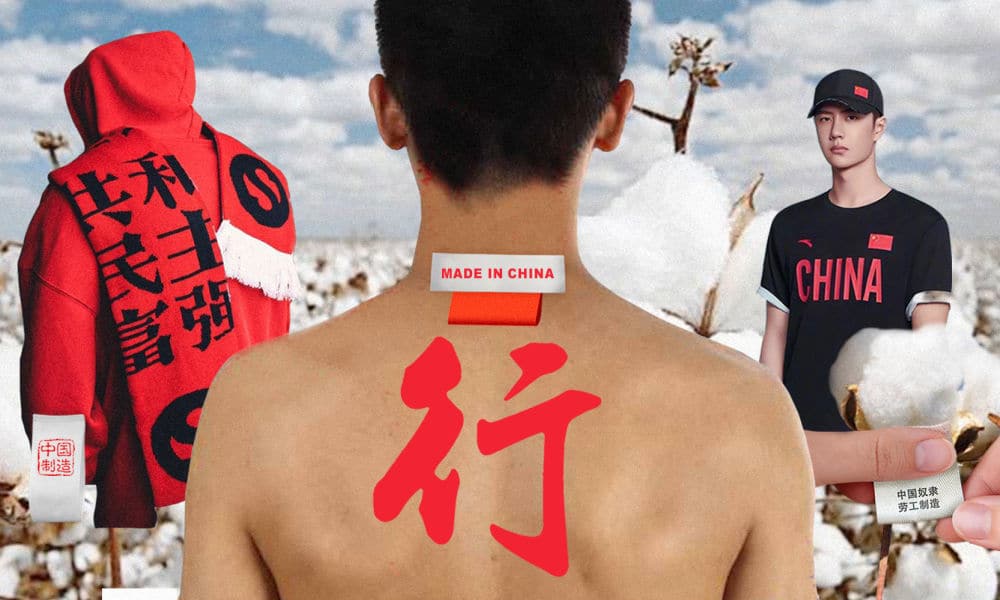
WHAT’S ON WEIBO ARCHIVE | PREMIUM CONTENT ARTICLE
At a time when Chinese media, celebrities, and consumers are condemning and boycotting Western brands, Chinese fashion and luxury brands are flourishing in a new era of “proudly made in China.”
This is the “WE…WEI…WHAT?” column by Manya Koetse, original publication in German by Goethe Institut China, see Goethe.de: WE…WEI…WHAT? Manya Koetse erklärt das chinesische Internet.
“The first thing Chinese fashion magazines should do is support the Chinese fashion industry, Chinese domestic brands, and Chinese designers!” In a video that went viral on social media, Hung Huang (洪晃), the famous American-Chinese television host and publisher of fashion magazine iLook, called out for a healthy development of China’s fashion industry that does not rely on Western brands to continue growing.
Hung Huang’s remarks were made in late March of 2021, around the time when a social media storm broke out in China over the Better Cotton Initiative (BCI) and its brand members – including H&M, Nike, and Adidas – for no longer sourcing cotton from China’s Xinjiang region. This boycott generated a huge backlash in mainland China. The online anger was mainly directed at H&M, since the Swedish retailer is a top member of the BCI and had previously released a statement on its site in which the company said it was “deeply concerned” over reports of alleged forced labor in the production of cotton in Xinjiang.
The news developments were followed by a wave of social media boycott campaigns and Chinese brand ambassadors cutting ties with international brands. It also ignited a social media movement in support of domestic brands, ‘made in China,’ and Xinjiang as China’s largest cotton-growing area.
The hashtag “I support Xinjiang cotton” (#我支持新疆棉花#) received a staggering 7.9 billion views on Weibo within a few weeks time. Simultaneously, a rising confidence in national brands became increasingly visible on social media, where the calls for supporting domestic brands are growing louder.
A recent survey by state media outlet Global Times suggests that most Chinese consumers believe that Western brands could be replaced by Chinese ones. The article claims that 75 percent of its survey respondents agree that “national products could fully or partially replace Western products.”
Proudly Made in China
Recent years have not just seen a rise in Chinese fashion brands, but also the emergence of a fashion scene where traditional Chinese elements play a major role. The Hanfu movement, for example, seeks to revitalize the wearing of Han Chinese ethnic clothing. But beyond that, brands are also weaving more Chinese themes into everyday fashion items such as sneakers and t-shirts.
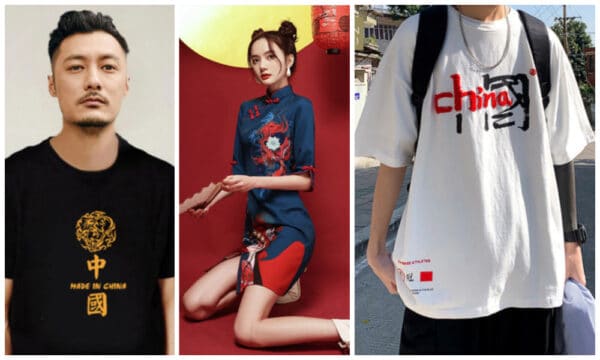
China themed fashion on e-commerce platform Taobao.
The rise in popularity of Chinese fashion brands and styles was dubbed the “China Chic” trend by CGTN in 2020. “China Chic” is a translation of “guócháo” (国潮), which literally means “national tide,” referring to the rise of domestic brands, with their designs often incorporating culturally Chinese elements into the latest trends. In 2021, for the first time ever, the Spring Festival Gala (Chinese state media’s biggest live televised event) also included a fashion show to show the beauty of Chinese costumes to “demonstrate cultural confidence.”
With celebrity endorsements being one of the most important strategies for social media marketing, Chinese celebrities play a crucial role in this trend as guócháo ambassadors. Chinese actor and singer Xiao Zhan (肖战) was praised on social media for becoming the new brand ambassador of the Chinese sportswear brand Lining. When celebrity Wang Yibo became the spokesperson for the domestic brand Anta Sports, one Weibo hashtag page on the topic received over one billion views (#王一博代言安踏#) in late April of 2021. The promotional poster featuring Wang Yibo shows him wearing a t-shirt with “China” on it, including the national flag – profiling Anta as a nation-loving brand.
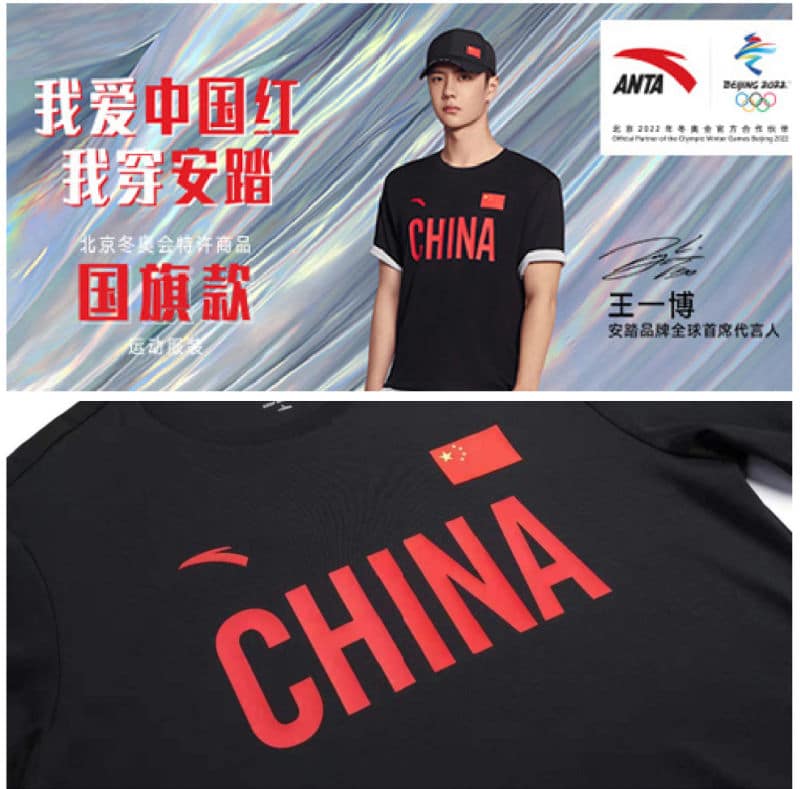
The rising popularity of ‘made in China’ fashion is noteworthy in a consumer culture where Western brands are often viewed as being of higher quality than domestically produced fashion. The very fact that these foreign brands succeeded in gaining access to China’s market is, in the eyes of many consumers, a reason to believe they must be of higher quality.[1] Those sentiments now seem to be shifting.
A recent Chinese short documentary produced by Tmall titled “Proudly Made in China” (爆款中国) discusses how Western brands have dominated the Chinese fashion and luxury market for years, making it more difficult for Chinese brands to become big players in their own field.
“Why are Chinese brands not as highly accepted by Chinese consumers?”, asks Li Jiaqi (李佳琦), an influencer and new brand recruiter for Tmall who is featured in the short film: “Why do Chinese consumers seem to have a preconceived and biased view that Chinese products are of poor quality?”
In the short film, Li explains that Chinese consumers have since long had worries about buying Chinese brands, and that one slight problem with a product will automatically negatively reflect on the entire brand.
Existing consumer preferences for Western brands have even created the idea that Chinese brands should register abroad and pose as a foreign brand to enlarge their chances to succeed in the Chinese market.
China’s flourishing live-streaming market and domestic e-commerce platforms have provided new opportunities for Chinese brands to shine once their products gain consumer recognition. Especially younger consumers, those born after 1995 or 2000, show more confidence in Chinese brands than the generations before them.
In the “Proudly Made in China” film, this growing trust in domestic brands among Chinese younger generations is linked to a striking confidence and pride in China, its national identity, and its culture. On Weibo, some commenters replied: “This is the era of domestic brands!”
Western Brand Controversies
Although the influence of national pride on China’s young consumers might already have been strong before, there are also changing dynamics in the relation between Chinese consumers and Western brands which seem to have boosted the ‘guócháo’ and domestic brand trend; Chinese brands have been cast in a more positive light over the past few years due to the controversies involving Western brands.
In 2018, Italian fashion house Dolce & Gabbana (D&G) faced consumer outrage in China for publishing a culturally insensitive advertising campaign that showed a Chinese model clumsily using chopsticks to eat Italian dishes such as pizza, cannoli, and spaghetti. The campaign, which was titled “D&G Loves China,” completely backfired with many finding it racist and sexist and vowing to boycott the brand. The controversy became so big that a big D&G fashion show in Shanghai was canceled and the company saw a slump in its business on the mainland.
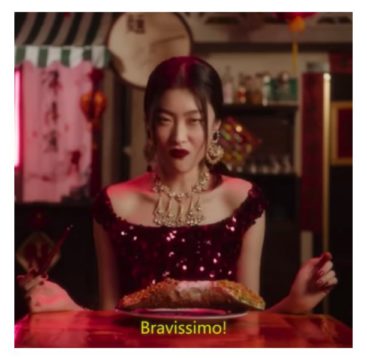
Still from the promotional D&G video that was deemed racist in China, causing major controversy in 2018 (whatsonweibo).
In 2019, many different international fashion brands, including Versace, Coach, Calvin Klein, Givenchy, and ASICS, were condemned by Chinese netizens for listing Hong Kong, Macau, and Taiwan as separate countries or regions – not part of China – on their official websites or brand T-shirts. Chinese celebrities cut their collaborations with many of these brands.
When in 2020 the aforementioned Better Cotton Initiative (BCI) announced that it was ceasing all operations in northwest China’s Xinjiang Uygur Autonomous Region amid accusations of “forced labor” there, backlash in China further grew against the organization and the brands affiliated to it. As reported by CGTN, BCI has recently removed its statement on Xinjiang cotton from its website (allegedly this was related to a cyber attack), but the discussions on the position of Western brands in China continue, with both state media and netizens sending out the message that “foreign companies that slander China” are not welcome in the country.
The Future of Fashion Brands in China
“Boycott Nike? Support domestic brands? What are we supposed to do now?” It is a question posed by the Chinese ‘Sneakersbar’ vlogger Fang (@鞋吧Sneakersbar), a sportswear-focused self-media account with over 3,5 million followers on Weibo. The question resonates with many consumers, who are caught between politics, patriotism, and personal preferences for certain brands.
In their latest video, Sneakersbar makes up the balance on where Western brands, especially those affiliated with BCI, stand in the Chinese market today. On the one hand, Fang argues, many foreign brands, including Adidas, Nike, H&M, Uniqlo, and others, have already become part of China’s commercial fashion landscape and many consumers love these brands and their products. On the other hand, these foreign brands are also making political choices that Chinese consumers cannot ignore. But does this mean they should be boycotted forever? Does it mean that you should look down on others buying these products?
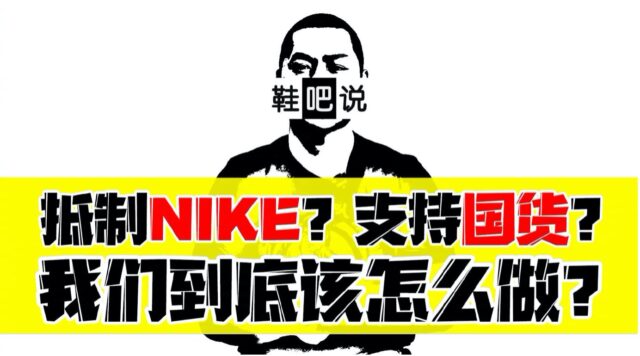
The video by popular weibo account Sneakersbar: “Boycott Nike? Support Domestic Brands? What are we supposed to do?”
The answer is that consumers should stay rational in their choices, Fang argues. This means that choosing Chinese brands out of a form of “rational patriotism” is fine, but people should not attack others merely because they wear foreign brands or work in their shops. The same goes for those consumers who only want to buy foreign brands just because they are foreign; they could also consider Chinese products to support domestic brands – especially those brands which refrain from copying foreign ones and have developed their own unique designs and styles.
Many commenters on Weibo support Fang’s message of “reasonable patriotism without blind worship” (“理性爱国,也不盲目崇拜”), supporting the idea that Western and Chinese brands can co-exist and that they can be competitors in a market where Chinese fashion labels are getting more room to grow.
“Nationalism and patriotism offer opportunities for Chinese brands,” one Weibo user writes: “China Chic and China fashion trends are putting more pressure on foreign brands. Because of the speedy rise of Chinese domestic brands, which are producing high-quality products and are applying smart marketing methods, more and more patriotic young people are buying their products.”
It is clear that many consumers in China support domestic brands and hope that Chinese fashion can flourish within its own market. But there are also those voices stressing the importance of consumers’ freedom to buy the brands that suit them, wherever they are from and regardless of politics. One person commented: “Western or Chinese brand, I just want to wear the shoes that are most comfortable for me to walk in.”
By Manya Koetse
Follow @whatsonweibo
[1] Tian, Kelly and Lily Dong. 2011. Consumer-Citizens of China: The Role of Foreign Brands in the Imagined Future of China. London & New York: Routledge. Page 7.
This text was written for Goethe-Institut China under a CC-BY-NC-ND-4.0-DE license (Creative Commons) as part of a monthly column in collaboration with What’s On Weibo.
Spotted a mistake or want to add something? Please let us know in comments below or email us. First-time commenters, please be patient – we will have to manually approve your comment before it appears.
Manya is the founder and editor-in-chief of What's on Weibo, offering independent analysis of social trends, online media, and digital culture in China for over a decade. Subscribe to gain access to content, including the Weibo Watch newsletter, which provides deeper insights into the China trends that matter. More about Manya at manyakoetse.com or follow on X.
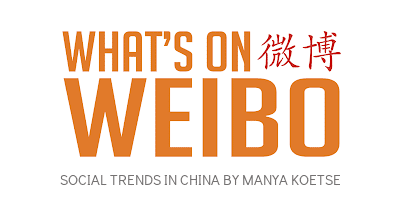
You may like
China Brands, Marketing & Consumers
Wahaha and Jinmailang: the Bottled Water OEM Controversy
Published
1 month agoon
May 16, 2025
What’s in your water? Would a water by any other name taste as good? That’s the main gist of the topic that’s been trending these days after Chinese consumers found out the Wahaha water they purchased was actually produced by Jinmailang, calling it an ‘OEM controversy’ (OEM stands for Original Equipment Manufacturer).
Wahaha Group (娃哈哈集团) is one of the largest food and beverage producers in China. The brand is a beloved one—last year in March, when its founder and chairman Zong Qinghou (宗庆后) passed away, people collectively began buying Wahaha water to show sympathy for the brand and for Zong, who was seen as a patriotic and humble businessman.

Big bottle of Wahaha (meaning “laughing child”) water.
In fact, that movement to pay tribute to Wahaha got a bit out of hand and turned into a grassroots campaign to boycott another water brand: Nongfu Spring, a competitor whose founder, Chinese entrepreneur Zhong Shanshan (钟睒睒), was not considered as patriotic (read more here).
Now, a different kind of ‘controversy’ is unfolding around China’s famous bottled water brand, directly related to last year’s sales boom. Chinese netizens have posted videos and images claiming that the Wahaha purified water they bought was actually produced by Jinmailang (今麦郎)—as stated on the label.

Wahaha water, produced by Jinmailang (今麦郎).
Jinmailang is an entirely separate food enterprise group—mostly known for its noodles—based in Xingtai, Hebei, since 1994. Both Wahaha and Jinmailang produce purified water (纯净水).
The fact that Jinmailang was mentioned on Wahaha’s labels as the producer raised questions: why bother buying Wahaha at all? Consumers might as well buy Jinmailang directly instead of these relabeled bottles? Wahaha is generally more expensive than Jinmailang’s own Blue Label water.
Wahaha’s customer service soon responded, confirming that they had indeed outsourced some of their production to Jinmailang. However, that partnership was terminated in April of this year after certain batches of purified water products failed to pass factory sampling tests (#娃哈哈称已终止和今麦郎代工合作#).
Customer service staff also stated that as long as Wahaha products are purchased through official channels, they comply with Wahaha’s quality standards and are safe to drink.
On May 16, Xinhua News published an interview with Fan Xianguo (范现国), the chairman of Jinmailang, about serving as an OEM for Wahaha. Without mentioning the termination of the partnership, Fan stated that last year, Wahaha’s bottled water sales suddenly soared, and that they began searching for companies that could support them during these peak times while adhering to their strict quality requirements – otherwise they would not be able to meet market demand.

Producing 1.2 billion bottles of water for Wahaha. Jinmailang’s xinua interview.
Jinmailang stepped in around June 2024, promising to support Wahaha’s production. During the peak season, they even prioritized Wahaha’s orders over their own. Over the course of a year, they produced 1.2 billion bottles of water for the company. Speaking about their own brand, Fan stated that they keep their prices as low as possible by minimizing their profits. One bottle of water only gives them 0.02 RMB ($0,0028) profit.
The interview seemed to cause a shift in online sentiments. Many netizens now praised Jinmailang for its response and for stepping in, viewing the cooperation as an example of domestic brands supporting one another.
Some suggested that Wahaha had betrayed Jinmailang by emphasizing the termination of their contract rather than acknowledging how the company had stepped in to help during a time of need.
At the same time, others applauded how Jinmailang turned the situation to its advantage by using it as an opportunity to promote its own brand.
“I’m switching to Jinmailang from now on, it’s way more cost-effective!” one comment read.
Especially since last year’s “water wars”, it’s clear that consumers’ choice of water is about more than quenching thirst alone — it’s also about which brand’s story resonates with them. As the peak season for bottled water is approaching, the OEM controversy comes at an especially unfortunate time for Wahaha. It’s Jinmailang that now seems to be having the last laugh in this OEM controversy.
By Manya Koetse
(follow on X, LinkedIn, or Instagram)
Spotted a mistake or want to add something? Please let us know in comments below or email us. First-time commenters, please be patient – we will have to manually approve your comment before it appears.
©2025 Whatsonweibo. All rights reserved. Do not reproduce our content without permission – you can contact us at info@whatsonweibo.com.
China Brands, Marketing & Consumers
‘Lai Dou Lai Le’: IShowSpeed Debuts in Chinese Online Commercial
Published
1 month agoon
May 8, 2025
🔥 A version of this story also appeared in the Weibo Watch newsletter. Subscribe to stay in the loop.
The China tour of American Youtube star IShowSpeed (Darren Watkins Jr.) is still echoing on Chinese social media—the hype hasn’t quieted down just yet, especially now that the popular livestreamer launched his very first Chinese commercial recently, just before the May Day holiday.
It’s an online commercial for China’s dairy giant Yili, and—in line with IShowSpeed’s high-energy livestream—it is entertainingly chaotic. Watkins himself posted the video on his Weibo account on April 30.
In China, Watkins is known as 甲亢哥 (Jiǎ Kàng Gē), which literally means “Hyperthyroidism Brother.” Hyperthyroidism is a condition where the thyroid is overactive, leading to symptoms like restlessness, a rapid heartbeat, and high energy levels. Due to Watkins’ fast-paced livestreams and his reputation for running, screaming, and jumping around, the nickname is a tongue-in-cheek reference that fits him well.
The commercial also suits him, as it is a bit of a rollercoaster. It begins like a typical celebrity endorsement, with Watkins promoting a dairy drink, but quickly shifts into a quirky narrative. In it, Watkins appears god-like, watching over people from a mountaintop and encouraging them to try new things. The ad then morphs into a music video before ending with some inspirational words from the YouTuber himself. Watch the commercial here.
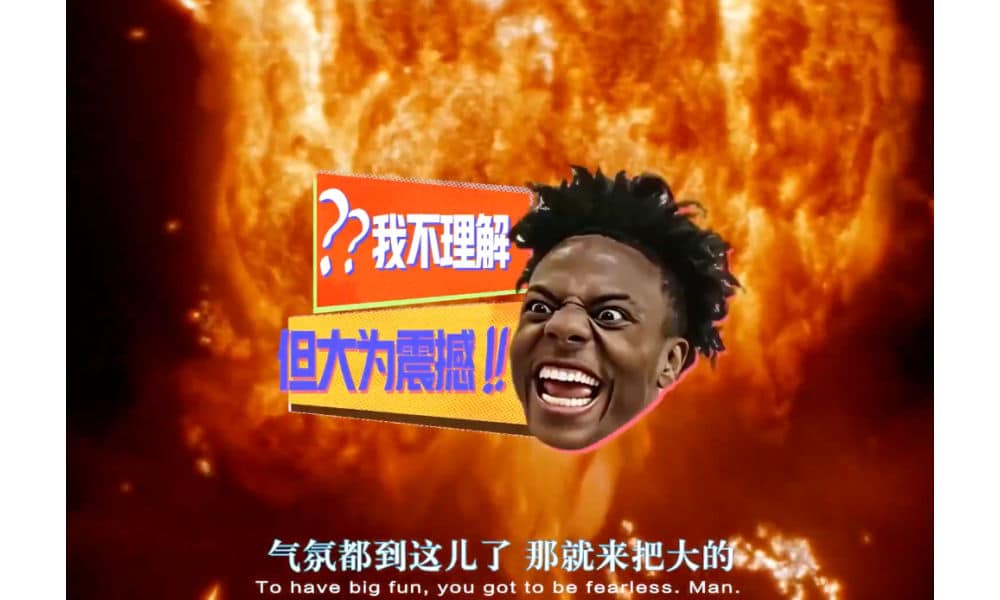
The slogan used in the commercial is “lái dōu lái le” (来都来了), along with the English tagline “Enjoy milk, enjoy holiday.”
“Lái dōu lái le” (来都来了) is a simple phrase that basically means “You’re already here,” and implies a light-hearted “Why not?” to encourage people to go on and do something (since you’ve come this far), or try something new.
Dao Insights’ Yimin Wang explained it as having a positive and daring tone to try new things that you’d otherwise “wouldn’t, couldn’t, or even shouldn’t,” much like “YOLO” from the early 2010s (link).
On Xiaohongshu, typical responses to the commercial describe it as “creative” and “cute.” More notably, many users see it as proof of how successful Watkins’ tour in China has been. “He’s like a native celebrity in China now,” one commenter remarked.
By Manya Koetse
(follow on X, LinkedIn, or Instagram)
Spotted a mistake or want to add something? Please let us know in comments below or email us. First-time commenters, please be patient – we will have to manually approve your comment before it appears.
©2025 Whatsonweibo. All rights reserved. Do not reproduce our content without permission – you can contact us at info@whatsonweibo.com.
Subscribe

Inside the Labubu Craze and the Globalization of Chinese Designer Toys

Lured with “Free Trip”: 8 Taiwanese Tourists Trafficked to Myanmar Scam Centers

10 Viral Chinese Phrases You Didn’t Know Came From Video Games

Earring Gate: Huang Yangdiantian and the 2.3 Million RMB Emerald Earrings

Guming’s 1 Yuan Ice Water: China’s Coolest Summer Trend

China Is Not Censoring Its Social Media to Please the West

IShowSpeed in China: Streaming China’s Stories Well

China Reacts: 3 Trending Hashtags Shaping the Tariff War Narrative

US-Russia Rapprochement and “Saint Zelensky”: Chinese Online Reactions to Trump’s Shake-Up

Chinese New Nickname for Trump Mixes Fairy Tales with Tariff War

Squat or Sit? China’s Great Toilet Debate and the Problem of Footprints on the Seat

China Trending Week 15/16: Gu Ming Viral Collab, Maozi & Meigui Fallout, Datong Post-Engagement Rape Case

Strange Encounter During IShowSpeed’s Chengdu Livestream

No Quiet Qingming: From High-Tech Tomb-Sweeping to IShowSpeed & the Seven China Streams

Inside the Labubu Craze and the Globalization of Chinese Designer Toys
Get in touch
Would you like to become a contributor, or do you have any tips or suggestions? Get in touch here!
Popular Reads
-

 China Media11 months ago
China Media11 months agoA Triumph for “Comrade Trump”: Chinese Social Media Reactions to Trump Rally Shooting
-

 China Society9 months ago
China Society9 months agoDeath of Chinese Female Motorcycle Influencer ‘Shigao ProMax’ Sparks Debate on Risky Rides for Online Attention
-

 China Memes & Viral11 months ago
China Memes & Viral11 months agoThe “City bu City” (City不City) Meme Takes Chinese Internet by Storm
-

 China Society12 months ago
China Society12 months agoHero or Zero? China’s Controversial Math Genius Jiang Ping
